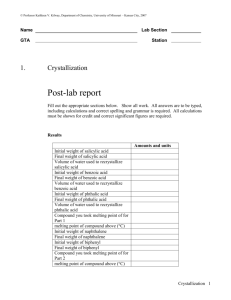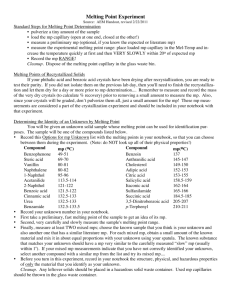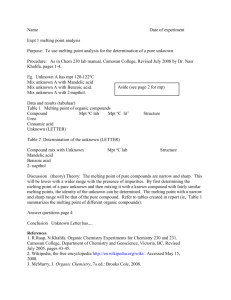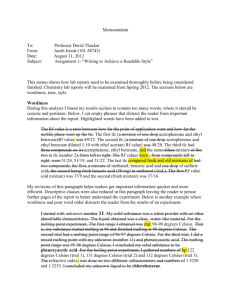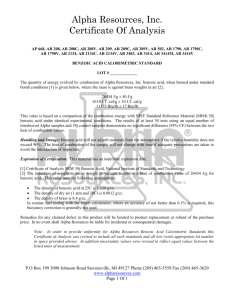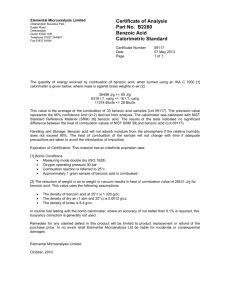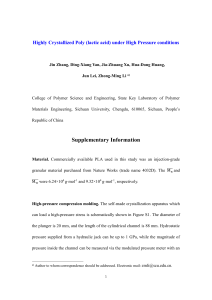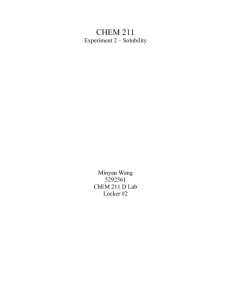Melting Point of Benzoic Acid and Unknown
advertisement
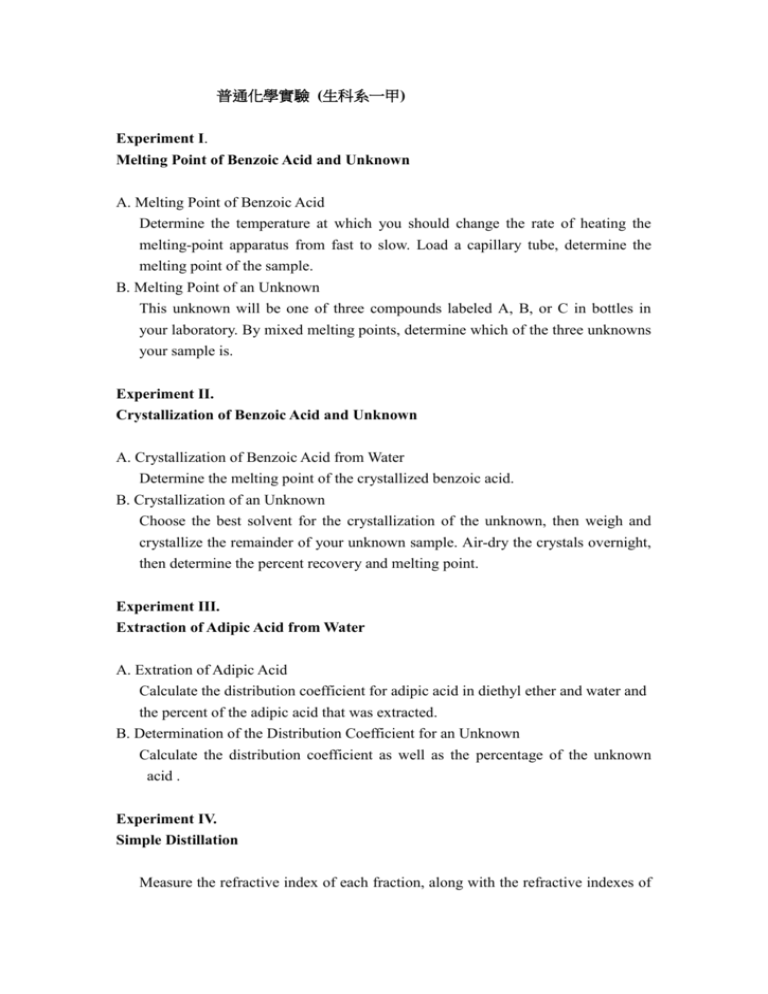
普通化學實驗 (生科系一甲) Experiment I. Melting Point of Benzoic Acid and Unknown A. Melting Point of Benzoic Acid Determine the temperature at which you should change the rate of heating the melting-point apparatus from fast to slow. Load a capillary tube, determine the melting point of the sample. B. Melting Point of an Unknown This unknown will be one of three compounds labeled A, B, or C in bottles in your laboratory. By mixed melting points, determine which of the three unknowns your sample is. Experiment II. Crystallization of Benzoic Acid and Unknown A. Crystallization of Benzoic Acid from Water Determine the melting point of the crystallized benzoic acid. B. Crystallization of an Unknown Choose the best solvent for the crystallization of the unknown, then weigh and crystallize the remainder of your unknown sample. Air-dry the crystals overnight, then determine the percent recovery and melting point. Experiment III. Extraction of Adipic Acid from Water A. Extration of Adipic Acid Calculate the distribution coefficient for adipic acid in diethyl ether and water and the percent of the adipic acid that was extracted. B. Determination of the Distribution Coefficient for an Unknown Calculate the distribution coefficient as well as the percentage of the unknown acid . Experiment IV. Simple Distillation Measure the refractive index of each fraction, along with the refractive indexes of the starting ethyl acetate and n-propyl acetate. Experiment V. Thin-layer Chromatography of Analgesic Drugs Calculate the Rf value for each spot in each chromatogram. Compare the relative abilities of two solvent systems to separate the components. Experiment VI. Synthesis of Cyclohexanol from Cyclohexene Most addition reactions of alkenes are initiated by an electrophile, hence the term electrophilic addition. The experiment is the acid-catalyzed reaction of cyclohexene with water to yield cyclohexanol. Experiment VII. Synthesis of n-Butyl Methyl Ether Primary alkyl halides undergo substitution reactions much more readily than they undergo elimination reactions. This experiment you will treat 1-bromobutane, a primary alkyl halide, with sodium methoxide to synthesize n-butyl methyl ether. Experiment VIII. Synthesis of 1-Bromobutane from 1-Butanol In reactions of primary alcohols, water is displaced in an SN2 process. In reactions of secondary and teriary alcohols, the oxonium ion loses water to yield a carbocation, which then combines with a nucleophile in an SN1 process.



